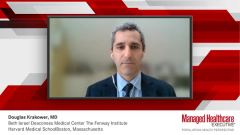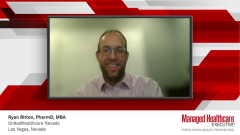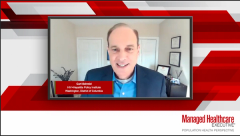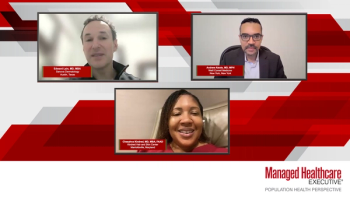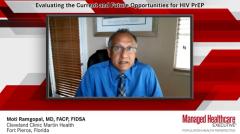
Opportunities for HIV PrEP in Population Health
The benefits of addressing barriers and increasing access to HIV PrEP therapies to high-risk populations across the globe.
Episodes in this series

Douglas Krakower, MD: I think some of the most important population health opportunities for PrEP [pre-exposure prophylaxis] are thinking about ways to streamline this process for both patients and clinicians. If PrEP is as easy as 1, 2, 3, I think that would make a huge difference. We need to work on many other things, such as knowledge of PrEP, stigma in health care and community settings, cost. But if we make it easy as possible for people to access, then I think we may hit the tipping point where it becomes more widely disseminated and used.
I think the system for paying for PrEP is very complicated. If people have insurance, it’s still very complicated in terms of which formulations are on formulary. How much of a co-pay is there? There shouldn’t be a co-pay because there’s a USPSTF [US Preventive Services Task Force] grade A recommendation for PrEP, but sometimes there are prior authorizations. So we have these things called PrEP navigators to help people get onto PrEP in an affordable manner.
If you take a step back, it’s kind of crazy that we need navigators to get people from A to Z for something as straightforward as PrEP. It’s really not that complicated of a medical intervention once you think about it. It’s almost like a see one, do one, and teach one in terms of medicine. For oral PrEP, it’s usually a daily pill or maybe an intermittent regimen, which is relatively straightforward. For injectable PrEP, it will be injections every 2 months after people are on a sustained regimen. I think we just need to make this as simple as possible.
Some colleagues who are health policy experts have proposed a way to have the federal government purchase and disseminate PrEP in a centralized manner. I think this offers a really exciting potential way to make PrEP much simpler for everyone who comes into the clinic, knowing they can access it at low, or no cost ideally, in terms of the medications, the laboratory testing, the clinical fees for physicians, etc. If we lower the bar in terms of barriers to accessing PrEP, that can only help because right now, if we think about how you need to have a navigator to get you onto PrEP, we need to simplify things.
I also think in terms of the CDC [Centers for Disease Control and Prevention] recommendations for PrEP, which are very well thought out, for oral PrEP, and then in the future, long-acting injectable PrEP, which have slightly different follow-up plans, it does end up being a relatively complex care plan to implement for a clinician in a health care system. You have to think about what agent someone is on, what the follow-up schedule is, have they had labs in the recommended amount of time? Have they had additional testing for sexually transmitted infections, have they had adherence counseling?
If there are ways we can use evidence to show that people can safely use PrEP with less access to the clinic, fewer visits, less lab monitoring when it’s safe, then I think those will be ways to improve PrEP as well. That can also dovetail and synergize with telemedicine approaches to PrEP. In the future, any way we can de-medicalize PrEP and engage communities on a broader scale, I think will increase the impact and effectiveness of the intervention.
Moti Ramgopal, MD, FACP, FIDSA: I do believe when you look at 1.8 million new cases a year around the world, the access beyond America is very important. There are 34 million people with HIV in the world today, and roughly 1.2 million in the United States, so 30-something million people around the world, and there are new infections every single day. I think ultimately, we really need to move this from the United States to the rest of the world. We need to make PrEP cheaper, available, and get it into places where the risk is high. We need to identify the hot zones, so to speak, the high-risk areas or communities around the country, around the world, and really focus our attention into these areas and sacrifice financial gains ultimately for what’s better in the long term for community and humanity.
Transcript edited for clarity.
Newsletter
Get the latest industry news, event updates, and more from Managed healthcare Executive.

